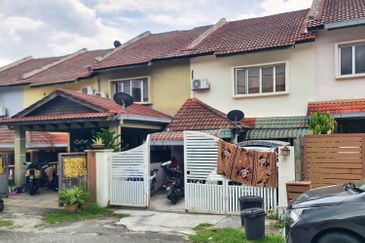
PETALING JAYA (June 19): A cheaper alternative to the Kuala Lumpur-Singapore high-speed rail (HSR) project may turn out to be penny wise, pound foolish, as it may cost more in terms of time and effort – and possibly leave Malaysia and Singapore out of a future regional HSR loop, warned analysts.
The Star reported yesterday that the Council of Eminent Persons had been briefed on a RM20 billion proposal to link Kuala Lumpur to Singapore by upgrading the existing Keretapi Tanah Melayu (KTM) double-track line with a standard-gauge track to enable trains to travel faster along the line.
A standard-gauge train can reach top speeds of 200km per hour – still slower than the 320km per hour the HSR can purportedly reach, rendering the journey along the standard-gauge track at about 130 minutes, compared with the HSR’s 90 minutes.
Sources told the daily that this plan came with a host of benefits besides the lower cost, namely causing less disruption and reducing the need for land acquisition, as well as sparing Malaysia from paying a hefty fee – which has been estimated at RM500 million – to Singapore for terminating the HSR as it would not affect plans put in place by the island republic.
However, analysts told Singaporean publication TODAY that the alternative plans would still require “considerable work” such as flattening curves along tracks to increase train speeds and developing land that may not be adjacent to the alignment and other public transport link enhancements to make it more viable.
Engineering director with Asia Rail Engineering Phillip Peachey said flattening the curves would involve building extra stretches of railway tracks to reduce sharp curves, enabling the trains to go across the bends instead of around them.
Thus, the ground under the tracks will need stabilisation and new drainage systems, he added.
“It’s still a costly and long-winded process, (and) it will never take the place of a high-speed route,” he said, adding that it may take five years to overhaul the track.
However, the 130-minute trip along the upgraded KTM tracks would still be viable for professionals provided if the trains are well-appointed with facilities that allow them to work, he opined.
Meanwhile, the Singapore University of Social Sciences transport economist Walter Theseira said the current KTM line starts and ends at the Woodlands Train Checkpoint in Singapore, which does not offer convenient links to Singapore’s public transport system.
This requires Singapore to consider another location for the terminal which will offer better links to public transport and its city centre – preferably a location next to a public transport hub – otherwise commuters will have to face another long journey there.
“It’s not as simple as upgrading the tracks. It will require completely redesigning and thinking about how we connect the KTM system to our city centre… if you have neither the speed nor the reliability, you run the real risk of ending up with a white elephant.”
However, Theseira said if the journey along the revamped KTM track took 130 minutes, it would still be acceptable when compared with a one-hour flight, as the KL-bound train would terminate at Kuala Lumpur Sentral in the city whereas those catching flights would land at Kuala Lumpur International Aiport which is a distance from the city.
However, the longer-term concern is that Malaysia and Singapore may be left behind a projected regional HSR system that will come up in Southeast Asia within the next 20 to 30 years.
“By building a system now that is not going to be interoperable with a true high-speed rail system, we may put ourselves in the unfortunate position of, in 20 years’ time, having to reinvest in a high-speed rail,” he said.
TOP PICKS BY EDGEPROP

Kl Gateway (Menara Suezcap)
Pantai, Kuala Lumpur

Subang Ville Ehsan Apartment
Bandar Sunway, Selangor

Sun-U Residence (Sunway Monash)
Bandar Sunway, Selangor






















